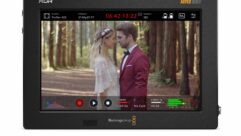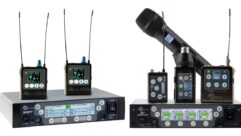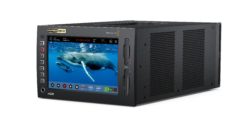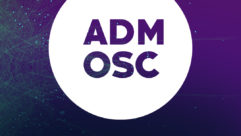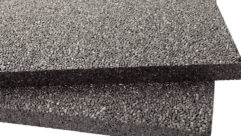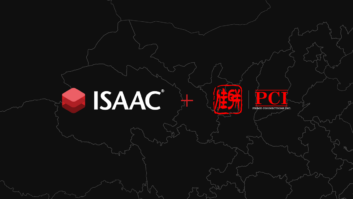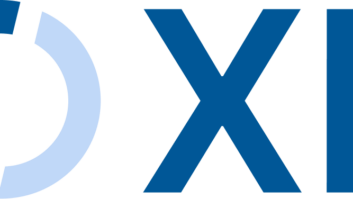REVOLUTION in digital signal distribution
Apr 1, 2000 12:00 PM,
Josh Kairoff
A few years ago, I would spend more time spell checking and retyping thanactually writing. The normal analog typewriter established limits inwriting that were not negotiable and, therefore, taken for granted. Today,the F7 key takes care of spelling, grammar and punctuation. Search andreplace a word? No problem. Change the number of words, margin spacing orthe fonts? Easy. Include a photo, real-time stock quote or chart in a memo?Simple.
The digital word-processing machine revolutionized the process of writing.Going digital gave us the ability to go beyond limitations of which we werenot even aware. In the video world, this revolution has been occurring inacquisition and production, and it is about to gain momentum indistribution.
The core of how images are made, stored, organized, selected, used,distributed and displayed is being redefined. Interactive content and thecontrol of that content are becoming expected components of manyinstallations. The areas of delineation between content type and displayapplication are steadily shrinking. The rules and limitations of ourhistorical method of handling display content issues are not necessarilyapplicable anymore.
When we consider installing a visual display, we usually consider itvideo-based and connected to an analog source by either a baseband orRF-modulated signals. Computer monitors are occasionally used, but the lackof appropriate display applications, along with the limits on signal cablelength, has kept traditional video as the preferred technology.
Video and computer systems have both historically used analog signals todistribute visual information. Analog’s inherent limitations in quality,portability, and degradation are considered part of life. We usedistribution amps, routers, scan converters and all sorts of signalinterface equipment to overcome the limitations of a construct that we haveall learned to accept.
Until recently, the technology was not sufficiently developed or costeffective to allow the use of high-quality moving visual content in thedigital domain. Computers were used in the production of visuals, but forthe most part, they were used as an upgrade for existing analog components.
Much has changed. Today, digital technology is inexpensive and powerfulenough to affect virtually every aspect of visual production. In manycases, converting digital into analog for legacy support can increase thecost of some equipment. The world of video production and visual displaynow has the technology to capitalize on the digital technology revolution.Just as word processing has changed our approach to writing, going digitalis enabling displays and control of content that was never before possible.
An interesting way to look at the benefits of digital signal distributionis to explore the ways a DVD-Video could work in a training facility. Atypical application for a training facility would be to install a DVD-Videoplayer and monitor for each teaching station. Using some method of controlinterface, a pupil can play and watch the desired content. We allunderstand how to use a normal DVD-Video player because DVD-Video playersare designed to mimic the expected functions of a traditional VCR. Inactuality, a DVD-Video player is just a specialized computer that knows howto decode a special configuration of digital image and sound data. Thisdata is stored on a high-capacity optical storage medium called DVD-ROM.The data containing content and control data is read by the computer,decoded and converted to an analog signal by special hardware known asdigital signal processors (DSP). All of this is packaged into a small boxshielding us from ever knowing what’s going on with the digits.
The same DVD-Video disc can also be put into a PC with a DVD-ROM drive. Thecontent can then be decoded using some combination of DSP hardware and/orsoftware. When used in a PC (or Mac), the content would show on thecomputer’s normal display and never need to be converted to analog video.
If the computer were to be connected to a network and configured as a mediaserver, then the image data from the DVD could be made simultaneouslyavailable to any other computers on the network.
A computer running some training programs could access the DVD content anddisplay it on its own display. Input from the students using the trainingprogram could be used to control the DVD media datastream. With enoughbandwidth and the right software, a whole room full of training computerscould use the same DVD for content. Each student could view and interactwith the content on an individual level. Updating the content for all thesesystems would involve changing only one disc rather than a disc in eachone. It is clear that using a digital distribution system in this casemakes the entire manipulation of information more flexible and easier tocontrol.
Another example of digital distribution facilitating and replacingtraditional methods can be found in the concept of digital cinema. Indigital cinema, the movie to be shown is transferred via a high-speedconnection directly to the theater’s projection system. Digitaldistribution eliminates the risk and costs of shipping actualanalog film.The needs of the theater, not the availability of physical film, willdecide when, what and how many screens show a particular movie. Everyscreening of a movie will look as good as the first.
Two of last year’s biggest movies were released in film and digitalversions. Both Star Wars Episode One: The Phantom Menace and Tarzan wereshown in some movie theaters without film or film projectors. Done mostlyas a proof of concept, the project was generally seen to be successful.Beginning next year, many of the films released will be distributed in bothanalog (film) and digital versions.
Types of digital
In the world of digital image distribution within a facility, there arethree main contenders – serial digital interface (SDI) for video, digitalversatile interface (DVI) for computers, and networked broadband datadistribution for everything. IEE1394 (Firewire) can also be used as adigital method of distributing content, but it is usually not considered arealistic option in industrial and professional environments.
SDI, SMPTE 259M or ITU-R 601 as it is officially known, is probably themost common digital method of distributing broadcast (NTSC/PAL) video fromdevice to device. SDI is a serial component (YCrCb) signal of 8 bits or 10bits per color that typically uses the same 75 V coax cable as basebandcomposite video. The SDI standard is a complete data format forpoint-to-point distribution. SDI is a good digital replacement for analogbaseband signals.
DVI is a newer digital interface standard for sending display informationbetween computers and displays. DVI can be thought of as a digitalreplacement for the current analog 15-pin VGA port. DVI is short-distance,point-to-point distribution technology that can handle uncompressed RGBdata signals. Although it was designed for the computer industry, manyformats and display technologies can use its capability for distributing asignal short distances.
Networked broadband data is simply using a computer network to move bits ofimage data among devices. Increases in the speed of networks and the powerof computers have combined to make real-time and near-real-time imagerypossible. All of the distribution benefits of networked computers can berealized as a media network.
Using established network protocols with enough bandwidth, any media formatcan be distributed across a network. Media streaming formats can share thenetwork with MPEG image data, event or trigger data, or some sort ofpriority format. Computers and display devices with computer interfaces canreceive this data and display it.
Data sent out over a computer network can be either point to point orbroadcast. It can also be of almost any type up to the network’s bandwidthlimit. Networks like the Internet, digital cable and DSS make globaldistribution possible.
Although some type of wire is usually required to distribute digitalsignals, there are other methods. Infrared light, high-frequency RF, andspread-spectrum RF can all provide digital datapaths without wires.DVD-ROM, digital liner tape, hard drives and chip memory (like the flashRAM used in digital cameras) all can be used to store data for physicaldistribution. Because the signals are digital, they can be transferred,copied and intermixed without affecting image quality.
All of this sounds wonderful, but there are still some roadblocks. Justbeing digital does not automatically mean compatible. Compatibility comesfrom establishing and maintaing format standards. Even slight deviationsfrom these standards can make content unusable. Unlike in the analog world,being a little bit off in digital generally means getting nothing useful.Anyone who has ever had a floppy disk work in one machine but not anotherunderstands how frustrating incompatibility can be.
Another potential problem with digital is that it is possible to intermixcontent in less than optimal ways. The equipment used to make or displayimages generally makes assumptions about many image properties. Forexample, an assumption that an NTSC video camera makes about frame rate,resolution, aspect ratio, gamma, colorimitery, scan frequencies and synclevel may not be the same on the digital projector showing the image.Equipment manufactures are addressing this issue, but it remains apotential problem.
In the end, as always, what your content is matters more than how it isdistributed. Digital signal distribution will, however, facilitate anever-expanding opportunity for that content to be used.


